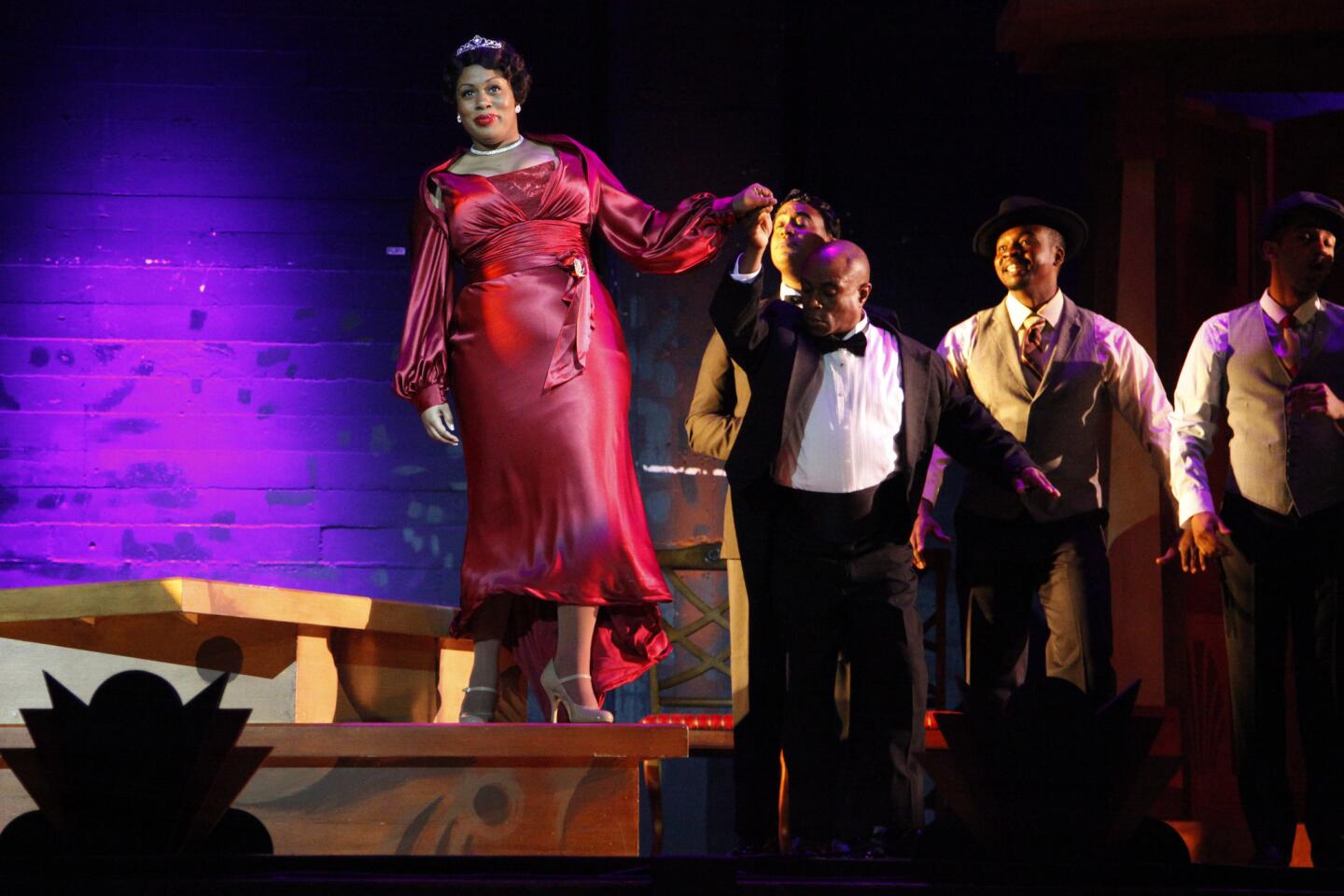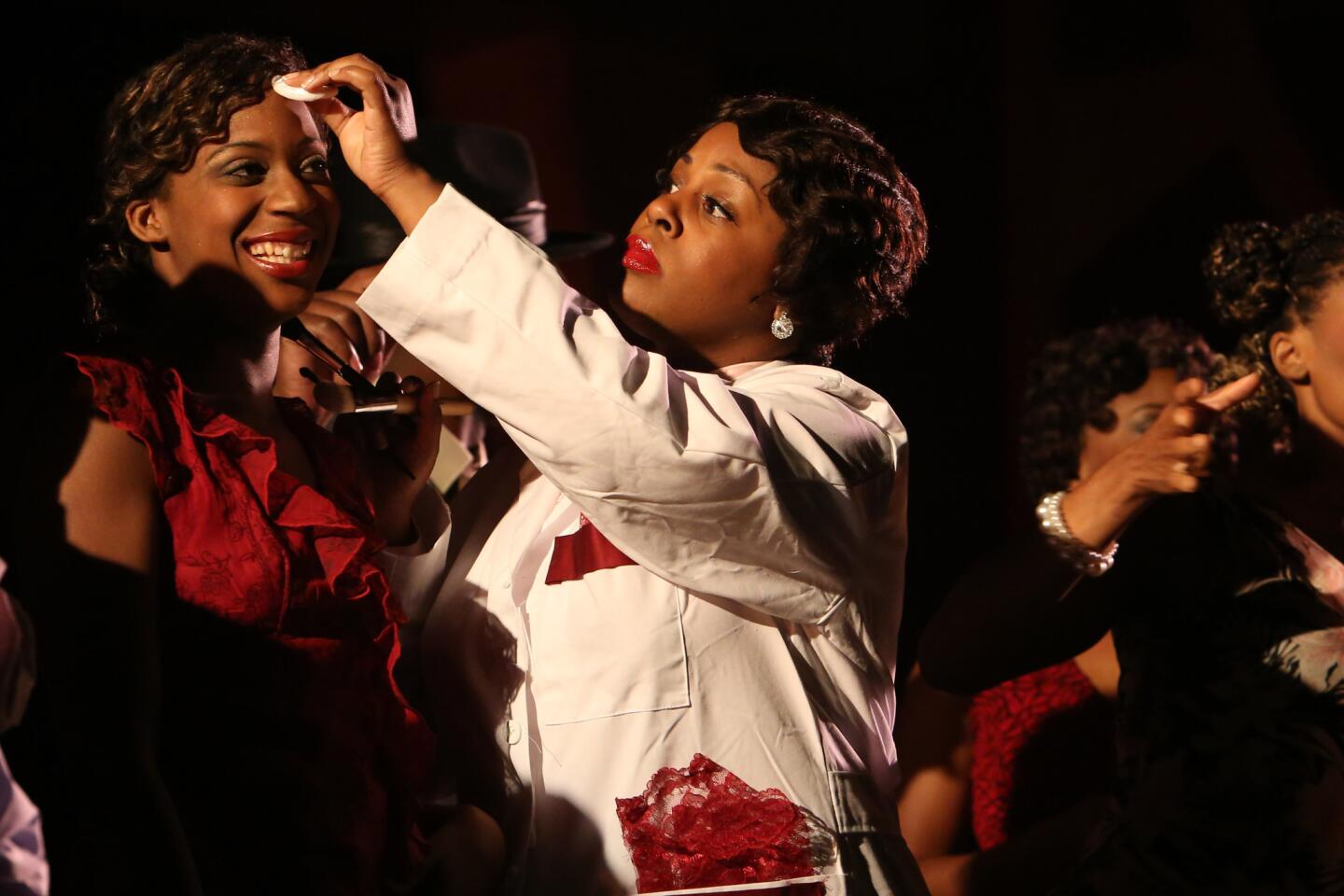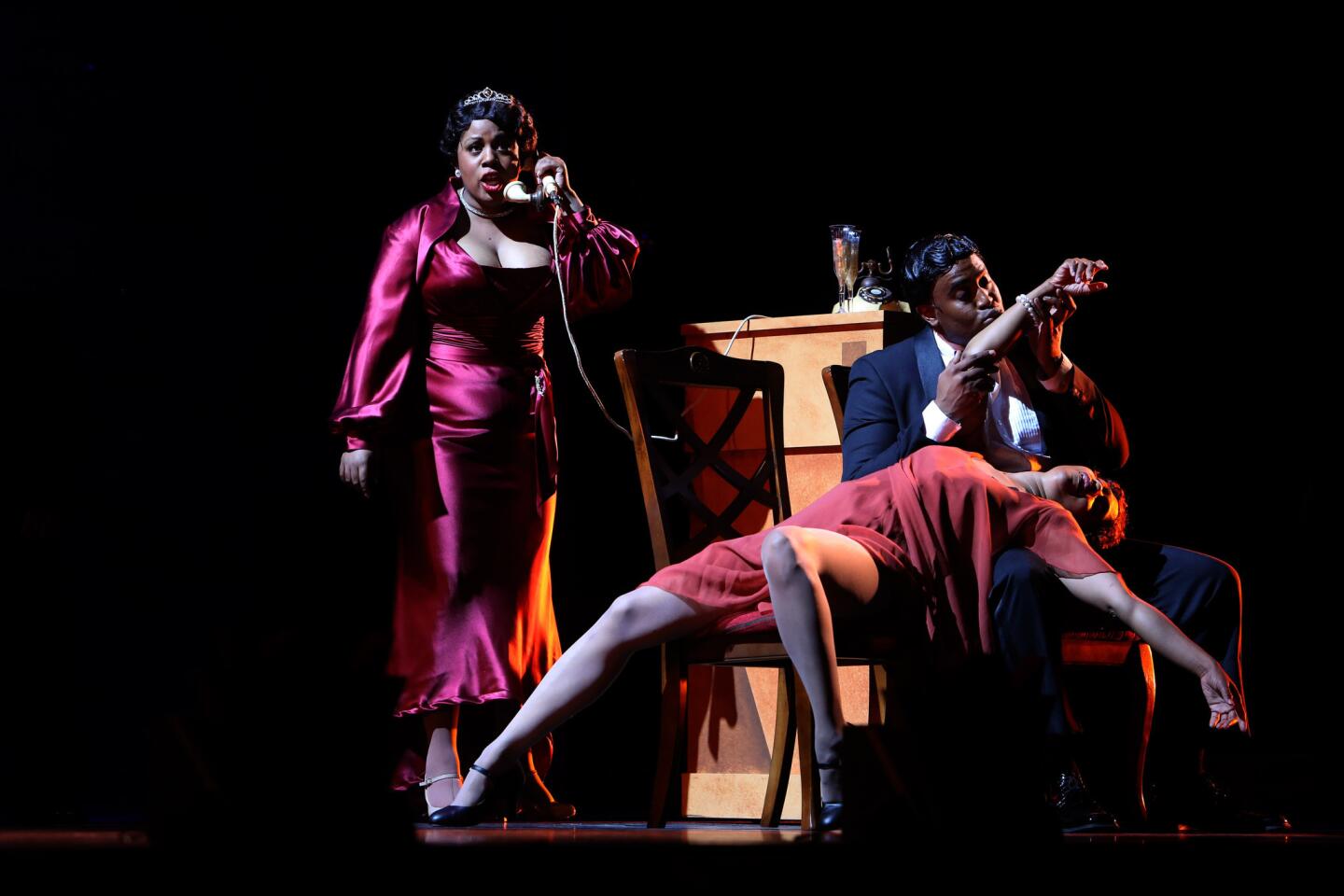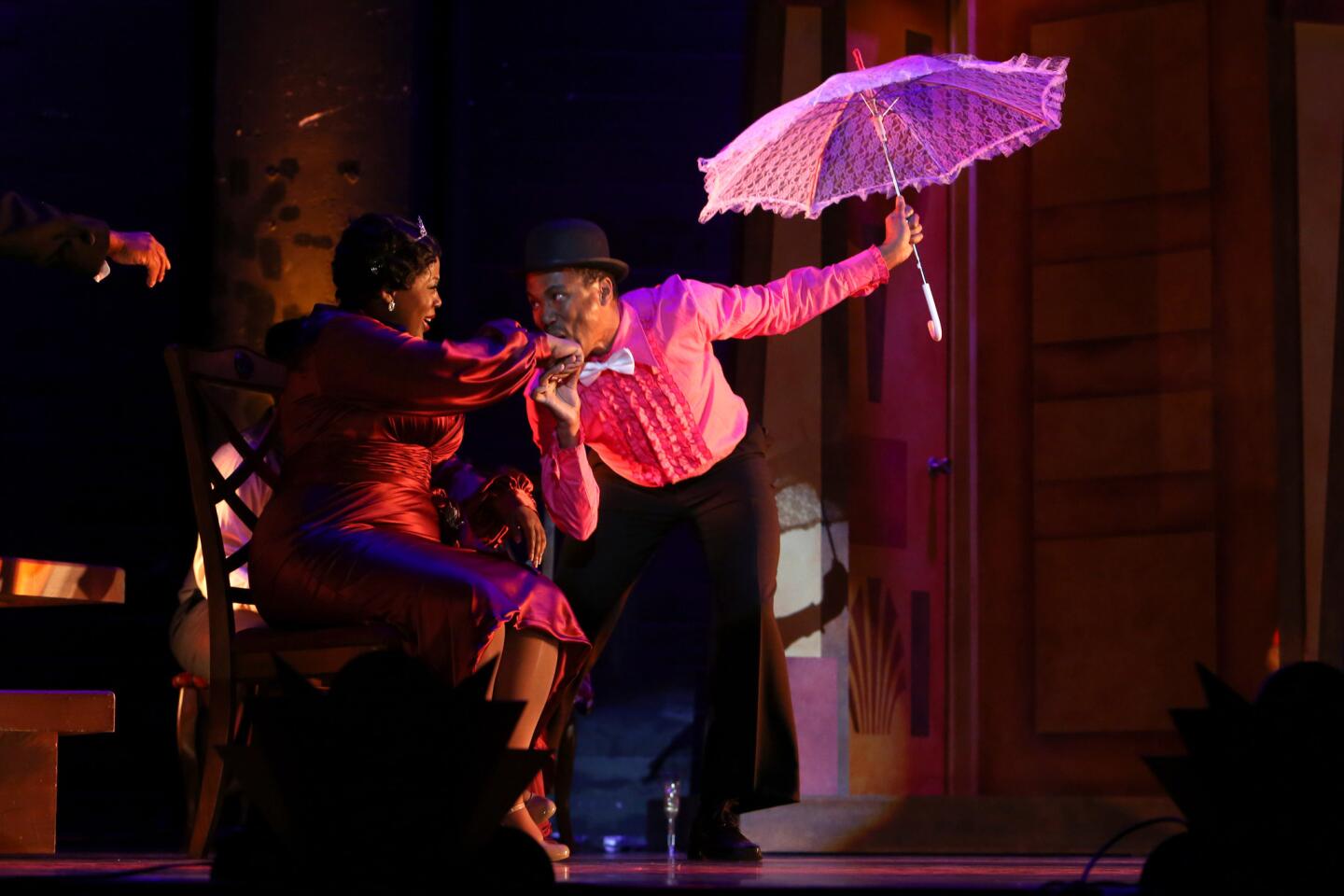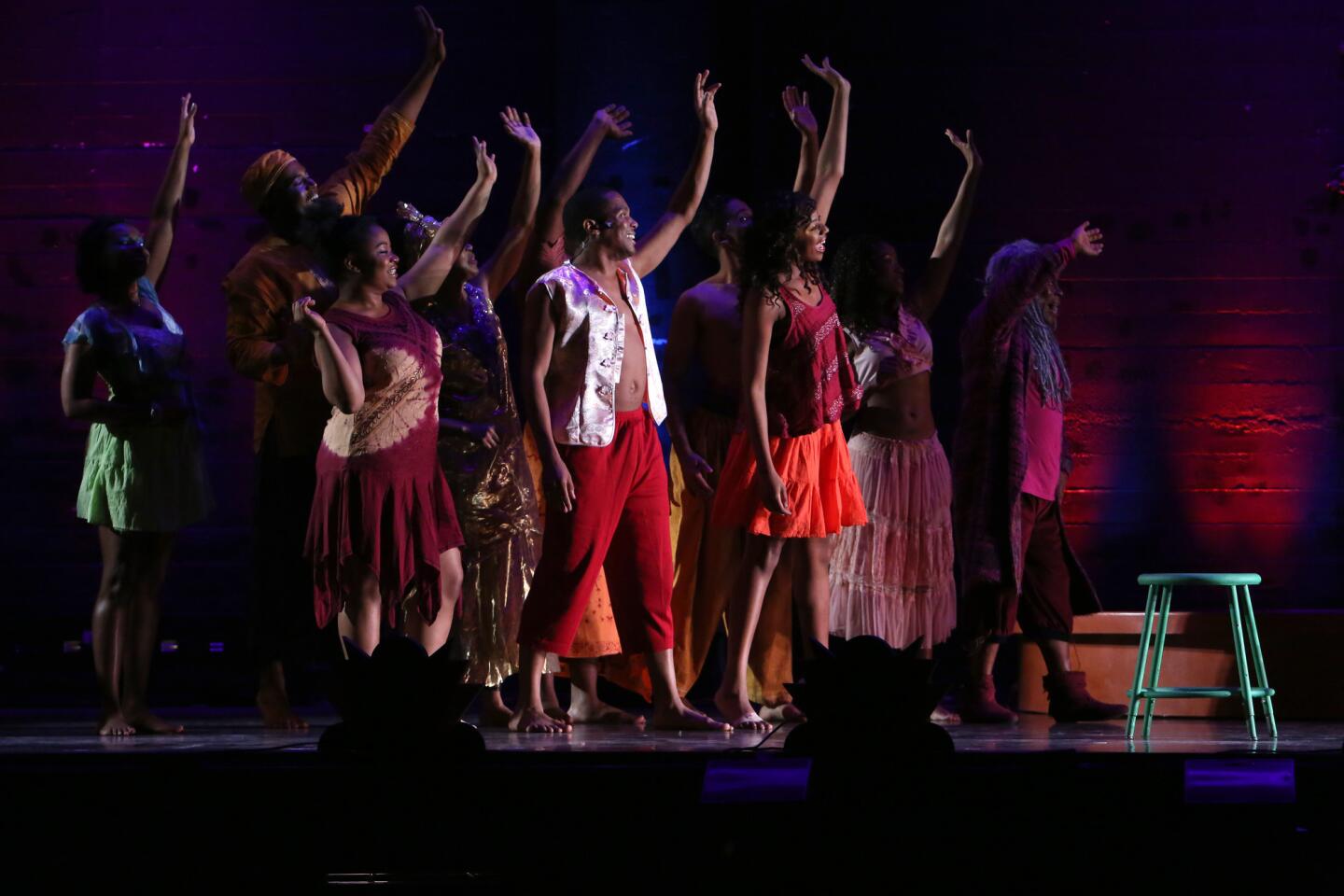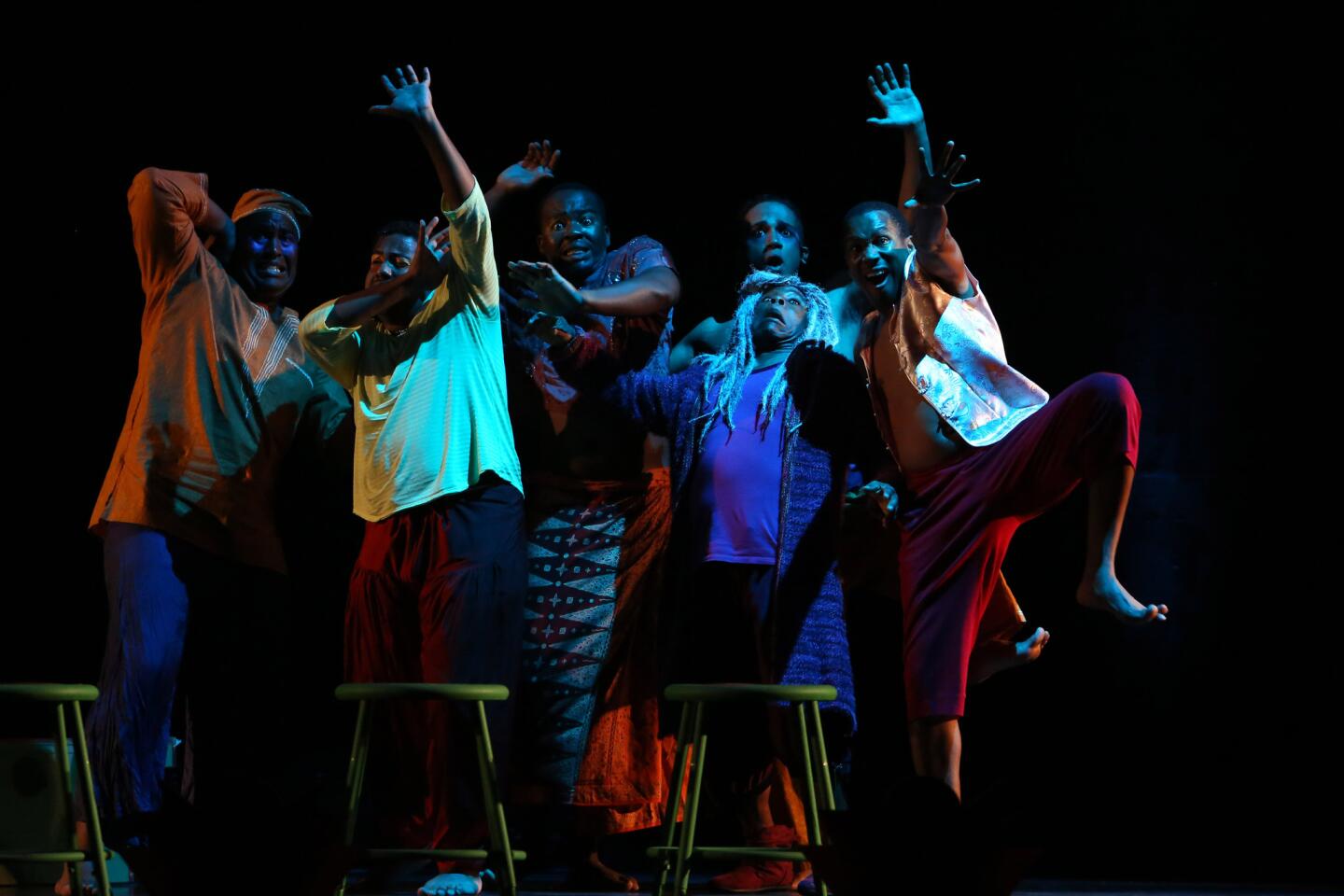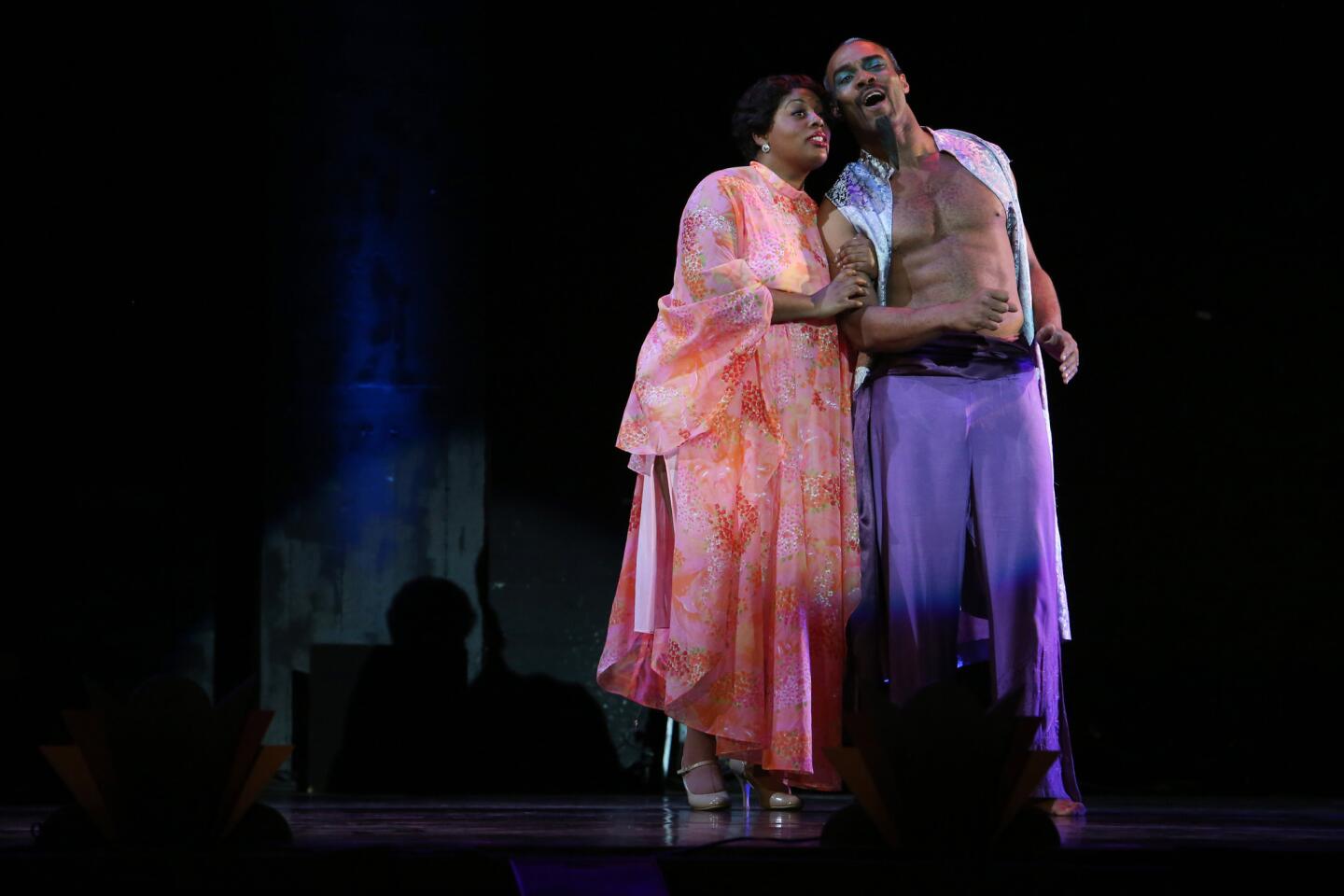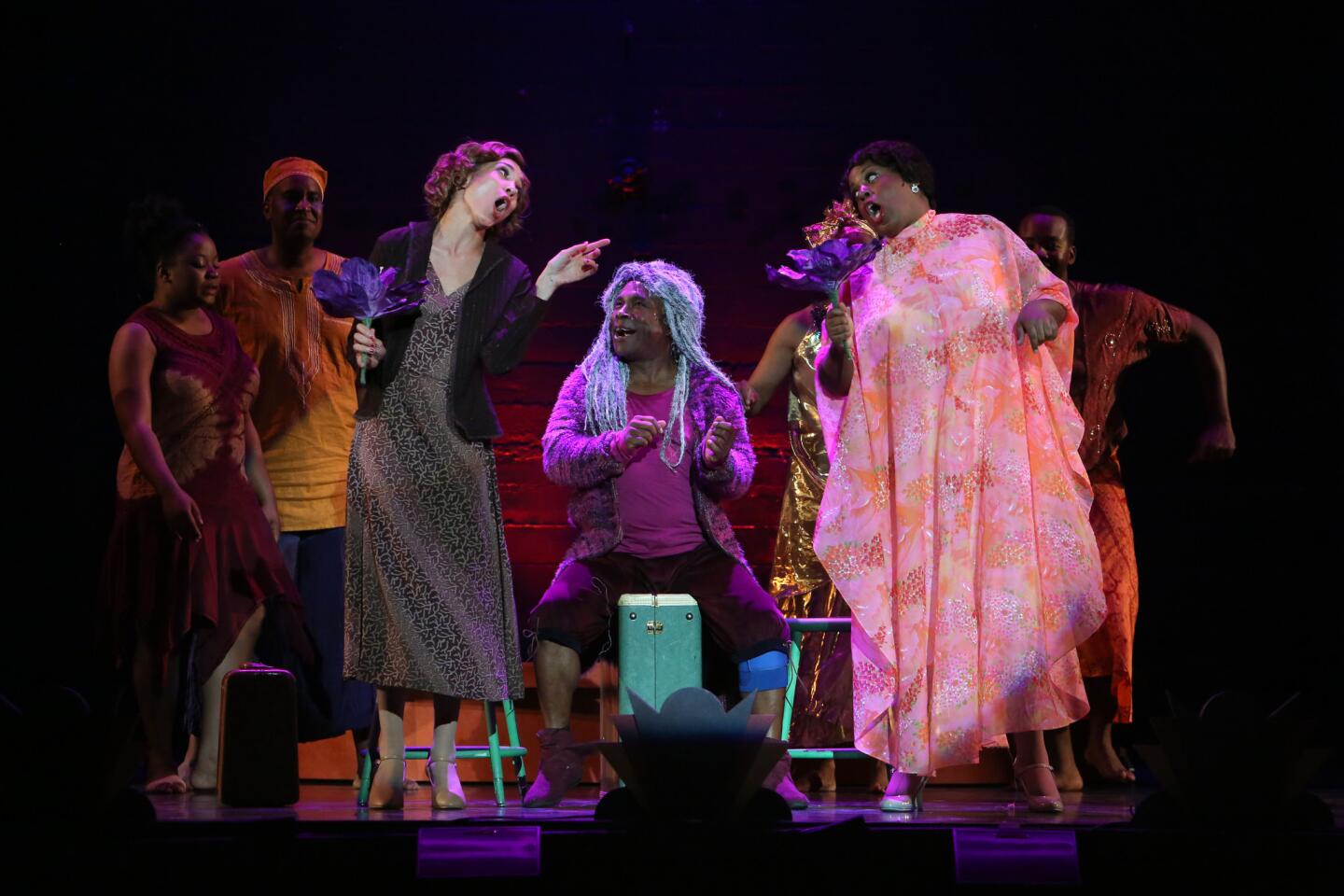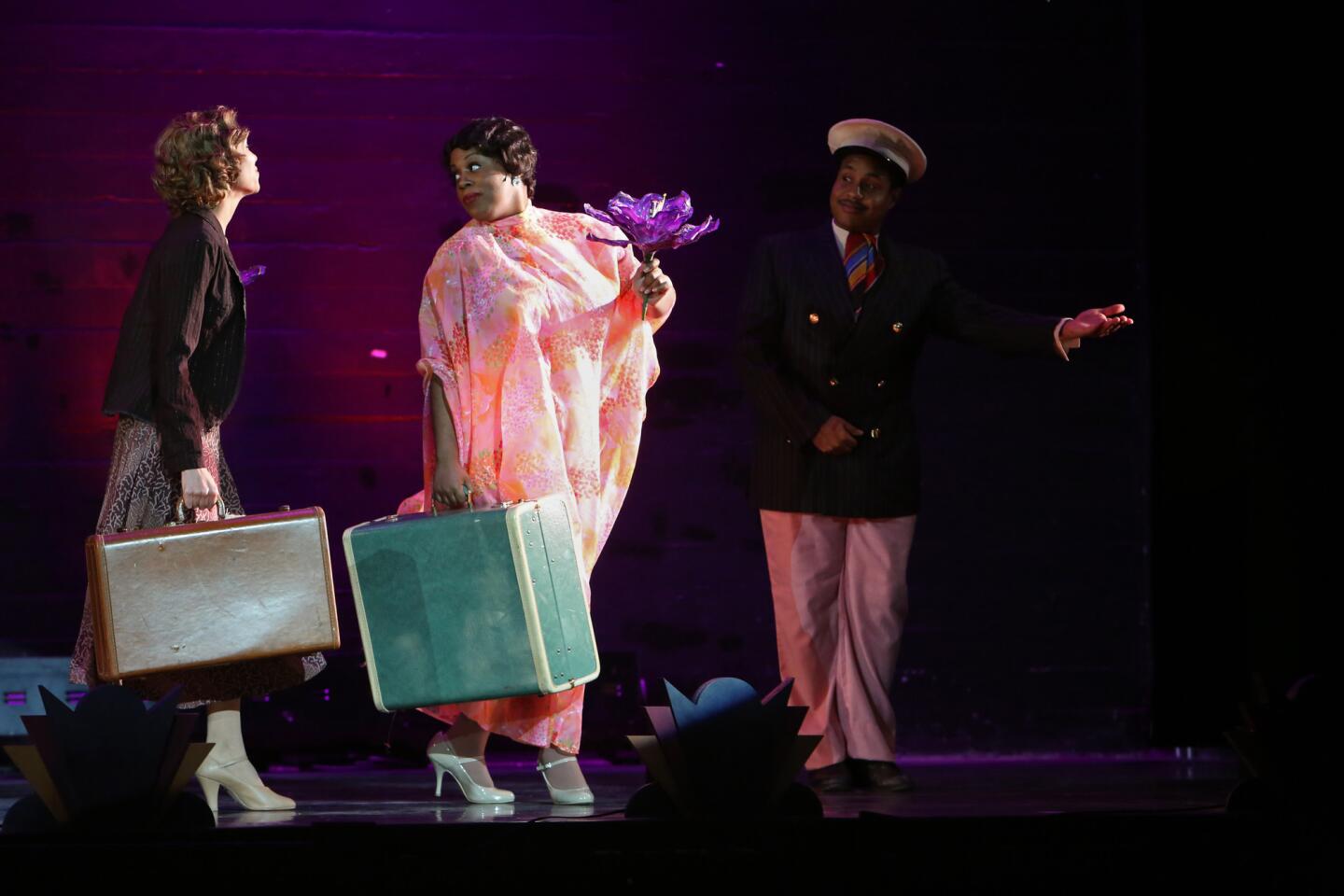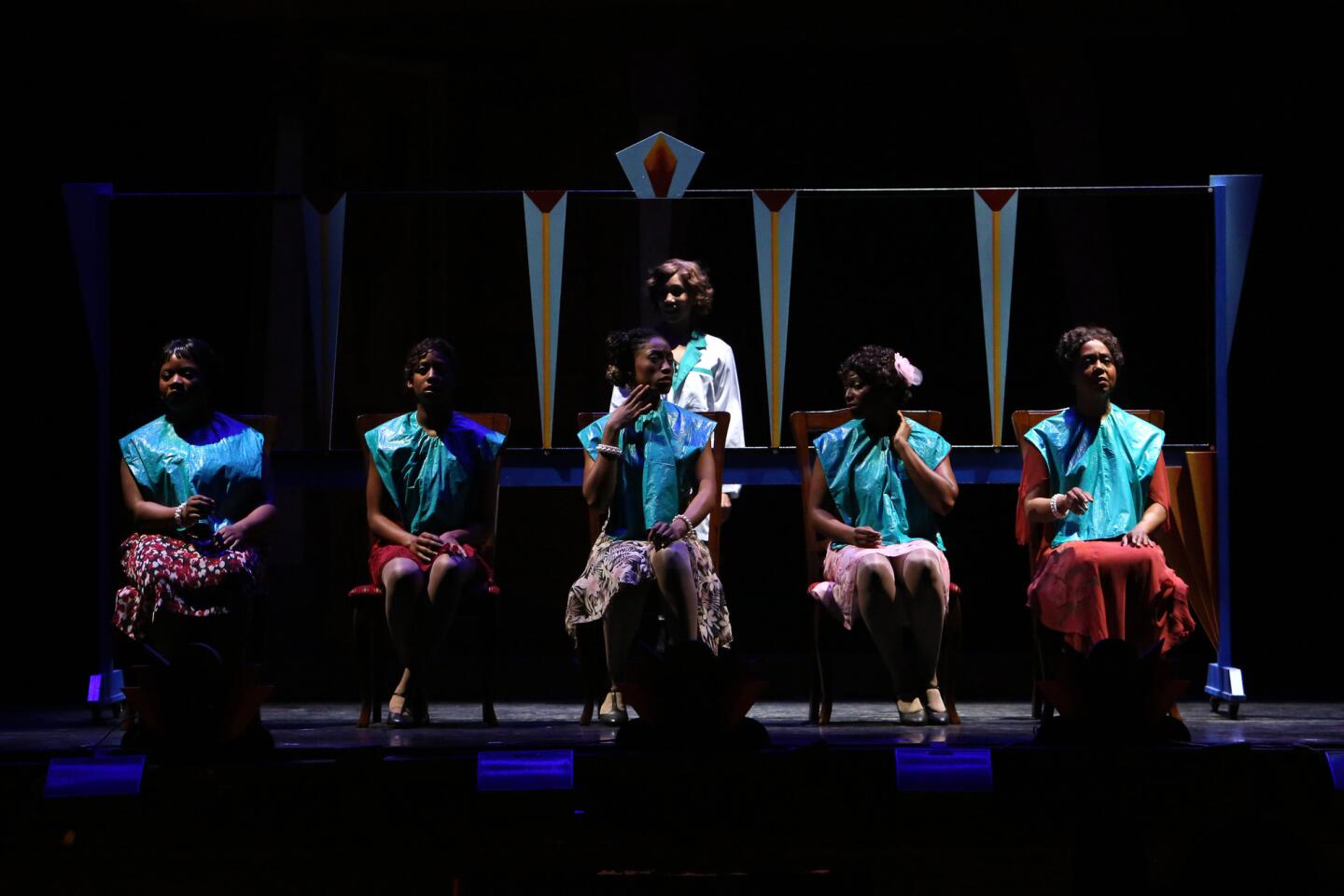Opera review: ‘Queenie Pie’ picks up where Duke Ellington left off
- Share via
Did Duke Ellington want to write an opera? Absolutely. He was working on “Queenie Pie” when he died in 1974.
Did he have an opera in him? We will never know. He had been intending to write one for four decades and never did.
Still, the notion of an Ellington opéra comique, as he dubbed “Queenie Pie” — a work that was to have affectionately parodied and honored opera, as it affectionately parodied and honored Harlem culture — is irresistible.
The first attempt to fashion something from what Ellington left behind into stage-worthy material was in Philadelphia in 1986. It wasn’t a success and the arrangements by Maurice Peress (who worked with Ellington) have been lost. There have been other efforts since — notably by Oakland Opera Theater and, in Austin, at the University of Texas. They weren’t big successes either.
PHOTOS: Arts and culture in pictures by The Times
Sunday night, Long Beach Opera made the most ambitious effort yet in the premiere of a new version, engagingly staged and wonderfully sung, of “Queenie Pie.” Ellington’s greatness was clearly, exuberantly felt. Or maybe I should say implied.
What we have of “Queenie Pie” are scraps: melodies for some songs, lyrics and indications of harmonies. But Ellington, whose way of composing was ultimately collaborative, never knew how he would ultimately fashion his material until he had started working with his band.
The new arrangement is credited to trombonist Marc Bolin and Long Beach Opera conductor Jeffrey Lindberg and based on both the Oakland and Austin versions. Bolin, in a pre-concert talk, said that he had little experience in arrangement and that that was the point. He didn’t want to leave his own musical personality on the score. Of course, he had no way of supplying Ellington’s trademark and essential unpredictability.
There was a lot, on all levels, for Long Beach Opera to come up with. First of all, the plot.
Queenie Pie is the annual title afforded a winning beautician, and the current regal Queenie has had it 10 years running for her hair-straightening products. She is now threatened by the younger, more glamorous — and fashionably lighter-skinned — Café O’Lay. That causes jealousy that is further inflamed when Queenie’s manager and lover, Holt Faye, falls for Ms. O’Lay, who shoots and kills Holt in a lovers’ quarrel.
RELATED: Faces to watch 2014 | Opera
Queenie Pie then sets out to an uncharted island in search of a magic flower, meets up with a king and a witch doctor and ultimately has reconciliation with Café O’Lay.
The show resembles a Broadway musical in its use of songs, dances and dialogue. Ellington handled all this with a light touch but with serious intent, dealing with issues of aging (his own mortality was pressing in those last years) and the concerns of African American discrimination between the lighter and darker skinned.
The final product that reached the stage to make all this come to life included songs Ellington had written for “Queenie,” along with others, familiar (“I Let a Song Go Out of My Heart” and “Creole Love Call”) and unfamiliar. Because there was talk of a television production of “Queenie Pie” at one point, Ellington also played around with the idea of writing his own mock commercials, and those are used as well.
Ellington sketched some winners. The opening chorus, “New York, New York,” is as excitingly cosmopolitan a Big Apple theme song as any of the town’s other driving anthems, and it deserves wide exposure. “Full Moon at Midnight,” an island song, is bittersweet classic Ellington. The lyrics, on which Ellington and others contributed, are not inspired and occasionally arch, but the music speaks for itself.
PHOTOS: Best classical concerts of 2013 | Mark Swed
Ken Roht’s staging and choreography evoke Ellington’s Cotton Club era with a fluidity that helps counter the patchwork nature of the songs and dance numbers. He also has an electrifying cast to work with, most from musical theater.
Karen Marie Richardson is a domineering, funny and moving Queenie. Anna Bowen’s Café O’Lay is a vulnerable beauty. Keithon Gipson, the one singer who comes out of opera, is a commanding figure as Holt and the King on the island. I worried about too much racial stereotyping in Jeffrey Polk’s approach to Lil’ Daddy and the Witch Doctor, but not at all about his total command of the stage.
A facile 10-member ensemble of singers and dancers were a pleasure at all times. Lindberg conducted a dynamic big band, but it remained far too blandly background to sound like’s Ellington’s. Danita Korogodsky’s fancifully painted sets and Dabney Ross Jones’ stylish and whimsical costumes proved added attractions.
Unfortunately, though, the amplification system in the Warner Grand has a whimsically destructive mind of its hissing, distorting, uglifying own. Presumably that will be fixed.
“Queenie Pie” obviously tantalizes. Long Beach Opera’s production (which is a co-production with Chicago Opera Theater, where it will be given next month) reveals that the score’s best moments are too good to let be lost to history. And yet Ellington’s opera will always taunt history. It can never be Ellingtonian.
-------------------------
‘Queenie Pie’
Where: Warner Grand Theatre, San Pedro
When: 8 p.m. Saturday and 2 p.m. Sunday
Cost: $29 to $160
Info: (565) 432-4934 or https://www.longbeachopera.org
Running time: 2 hours, 10 minutes
More to Read
The biggest entertainment stories
Get our big stories about Hollywood, film, television, music, arts, culture and more right in your inbox as soon as they publish.
You may occasionally receive promotional content from the Los Angeles Times.
